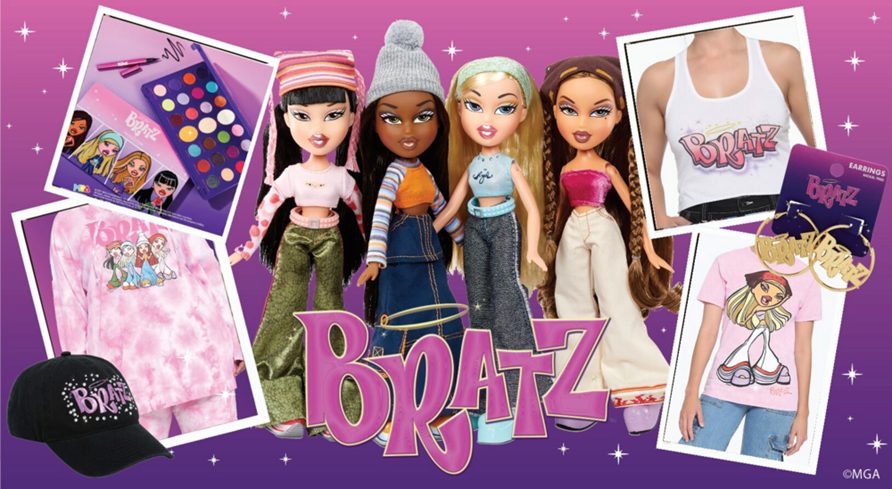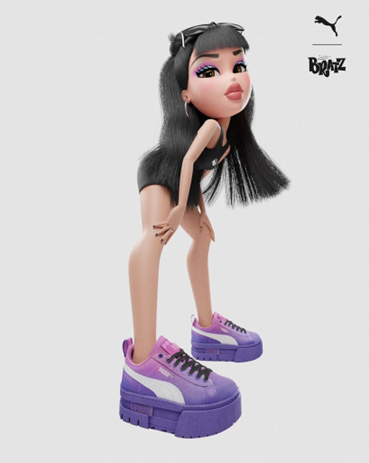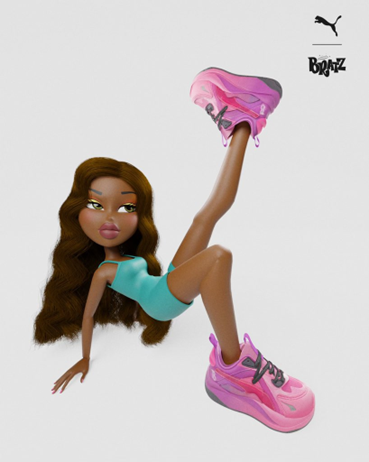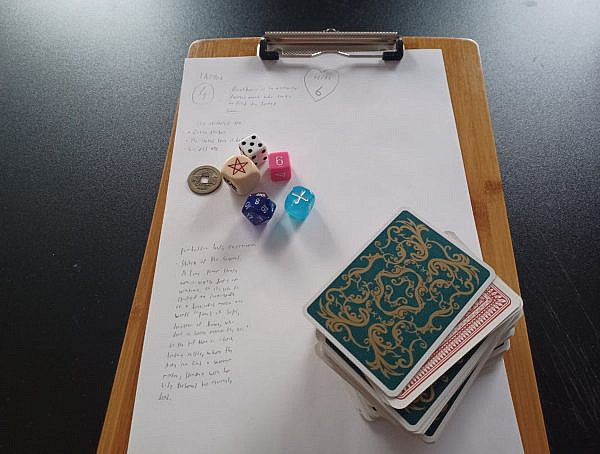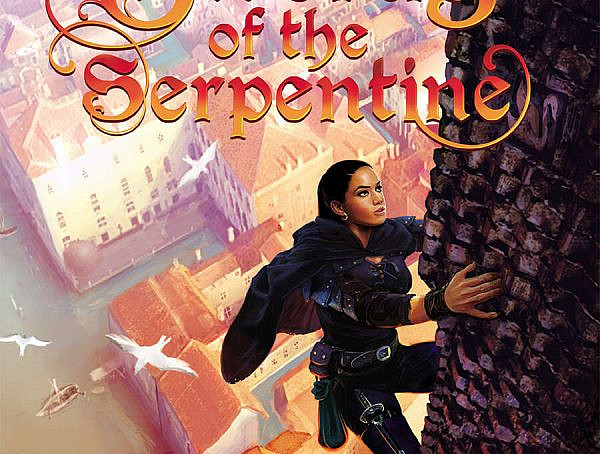Where did they come from, where did they go?
Bratz dolls are MGA’s fashion dolls that first came out in 2001 as competition to Mattel’s Barbie. The four main girls, Cloe, Yasmin, Jade and Sasha, became fashion icons for young girls growing up in the early 2000s – the dolls reflected the fashion and pop culture trends that were relevant at the time, which made them stand out from the classic Barbie dolls. A potentially significant factor in the Bratz dolls’ popularity is their diversity: right from the start, the doll line included dolls of various ethnicities, unlike many other brands where the non-white dolls only come out after years of production.
While the Bratz dolls were incredibly popular in the 2000s, they slowly fell off the radar in the 2010s after redesigns were met with disappointment from fans (and Mattel kept going back and forth with MGA for alleged copyright infingements). The line of dolls was discontinued several times, and Bratz went radio-silent for a few years. Yet now the original dolls are popping up in stores again, and the official Bratz social media accounts are posting content, both old and new, regularly, with older fans increasingly commenting and interacting with the brand. How did the Bratz manage to reclaim their place in popular culture and why are the fans now teenagers and young adults instead of young girls?
Sweet sweet nostalgia and the y2k trend
 I had last heard about Bratz in around 2016 after another failed attempt from MGA to redesign the dolls for new target audiences, when suddenly a few years ago I started noticing Bratz memes and trends popping up on social media: reaction images taken from old Bratz films and makeup challenges where people tried to replicate the Bratz doll faces with makeup. These still weren’t enough to bring Bratz back as a larger cultural phenomenon and were just small occurences. But then the fashion trend of y2k came along, bringing with it the low waist jeans, tiny crop tops, big shoes and wide-leg pants – the fashion trends that were prevalent in the original Bratz doll designs.
I had last heard about Bratz in around 2016 after another failed attempt from MGA to redesign the dolls for new target audiences, when suddenly a few years ago I started noticing Bratz memes and trends popping up on social media: reaction images taken from old Bratz films and makeup challenges where people tried to replicate the Bratz doll faces with makeup. These still weren’t enough to bring Bratz back as a larger cultural phenomenon and were just small occurences. But then the fashion trend of y2k came along, bringing with it the low waist jeans, tiny crop tops, big shoes and wide-leg pants – the fashion trends that were prevalent in the original Bratz doll designs.
This throwback trend isn’t only within fashion, but in social media aesthetics and culture as well: the kids from early 2000s are now teenagers and young adults, and they’re looking back to their childhood with bittersweet nostalgia, bringing back trends and childhood favorites from the rose-color tinted memories. Big companies have noticed this trend, and thus have started producing more nostalgia-fueled products and collaborations, such as clothing lines or makeup collections inspired by cartoons and other childhood memorabilia from the early 2000s.
Bratz managed to grasp onto this phenomenon: for example, Revolution Beauty has a Bratz makeup collection that flies off the shelves with tens and even hundreds of positive reviews from young adults showing their affection towards their beloved childhood dolls. Due to their reputation as the fashionable, always-on-trend dolls, Bratz have been able to do collaborations with not only fast fashion and makeup brands, but also high fashion: the brand has collaborated with the high fashion brands Cult Gaia and GCDS, the former being a clothing line and the latter a release of two special edition dolls. Even a shoe line was released as a collab with Puma, with the Bratz girls posing as the models for the ad campain.
Dolls aren’t just for kids
While the current popularity of Bratz dolls among older fans is largely fueled by nostalgia, the existence of fashion doll collectors and overall fashion doll fans who are adults isn’t a new phenomenon: an example of this is the large collector scene and the OOAK (one of a kind) doll phenomenon among Monster High doll fans. These adult collectors have shelves upon shelves full of Mattel’s Monster High dolls from each different line, often unopened in boxes or propped up to stand in a pose. Due to their variety of face molds and the posable joints, Monster High dolls have become popular among doll artists as bases for their creations.
Bratz aren’t quite as popular among OOAK doll artists, but I’ve come across doll artists who still use them and one popular artist even creates custom Bratz dolls based on commissions. The unique dolls come in customized boxes created to imitate real in-store Bratz doll packaging. Even when people don’t customize their dolls, they can produce creative photography and edits with the dolls as models, just as some do with fancier, more expensive dolls like Pullips and other ball-jointed dolls. Nostalgia isn’t the only factor that makes dolls popular among adults, it’s also the creativity and mixed media art forms that they afford.
Image credits:
Featured image: ©MGA, retrieved from https://bratz.fandom.com/wiki/Bratz_20_Year_Anniversary
First image: Screenshot of a tweet made by the official Bratz Twitter account, retrieved from https://twitter.com/Bratz/status/1511463689429291010?cxt=HHwWhMCstfWN5vkpAAAA
Second and third image: Screenshots by author from the Revolution Beauty online store, image of a customer’s comment edited to hide their name and profile picture
Fourth and fifth image: Promotional images of Bratz x Puma collaboration, retrieved from https://bratz.fandom.com/wiki/Bratz_x_Puma
You might also like
More from Features
Game Awards – Celebration of talent or a Marketing Extravaganza?
The Game Awards 2024 is over and the winners are announced. However, are they still following the same pattern that …
Worlds in a Finnish Theater: League Finals, Community, and Döner Kebab
I travelled to Helsinki to watch League finals in a cinema, and it was worth it. #leagueoflegends #esports #community #worldfinals







